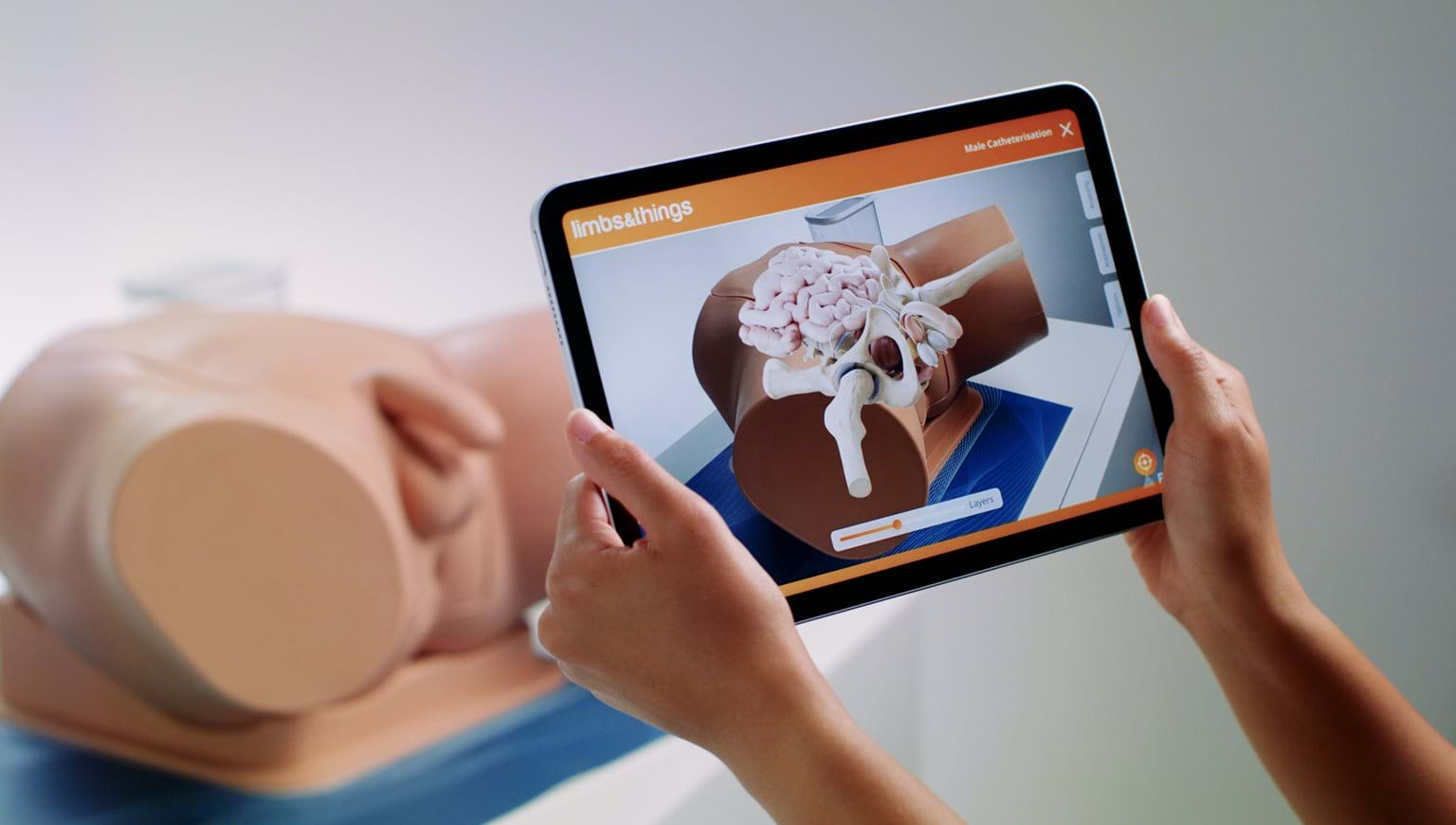News
The Use of Augmented Reality to Enhance Learning
08 November 2023
AR technology is changing the pace of medical training.

Technology is changing at such a fast pace that it can be difficult to keep up with. In healthcare simulation, technological innovations continue to enhance the learning experience, making it more realistic and increasing both learner confidence and competence, as well as improving patient care.
“Multiple studies have demonstrated the effectiveness of simulation in the teaching of basic science and clinical knowledge, procedural skills, teamwork, and communication as well as assessment at the undergraduate and graduate medical education levels.” Additionally, “a few studies have shown direct improvements in clinical outcomes from the use of simulation for training.”
There are many methods of adding technology to simulation. Studies that include “Technology-enabled approaches, such as the use of extended reality (XR) media, including immersive virtual reality (IVR), augmented reality (AR), and mixed reality (MR)” are appearing the literature, showing evidence of “more authentic simulated learning experiences that cannot be achieved with traditional simulation media.”
As with any emerging technology, there are currently many terms used to describe physical simulation enhanced by technology. A systematic review published in 2021 provides these definitions:
- “Augmented reality (AR) simulator: an interactive simulator in which the real-world environment is enhanced by computer-generated content perceived by the user using different senses. In these simulators, the specifically designed physical component could be absent (using only pre-existing elements of the real-world environment, such as the ground, a wall etc.), passive (not actively participating in the simulation), or active (providing/enabling specific functionalities in the simulation)
- Hybrid simulator: an interactive simulator in which the system integrates both a virtual and a physical module. In these simulators the physical parts are always present, but they could play either a passive or active role in the simulation
- Mixed reality (MR) simulator: an interactive simulator in which real content (physical objects) and virtual information (computer-generated content) are merged so that they can interact with each other in real time. In these simulators the physical parts can interact with the virtual content (and/or vice versa)”
Fealy et. al (2023) explains that “AR can enhance a user’s perception of reality, by adding digital objects or information to the live view of their environment, making it possible to interact with both the real and digital worlds simultaneously.”
In 2016, Barsom et. al, distinguished AR from the traditional virtual reality in his systematic review, stating “Augmented Reality differs from virtual reality in their ability to combine a physical simulation (such as laparoscopy equipment or mannequins) with a virtual reality overlay simulation, creating a truly immersive experience.
Rare or complex situations, such as anatomical variations or emergencies, may be trained more optimally and realistically. This gives the opportunity for simulation training to transcend from partial-task training (such as laparoscopic dexterity exercises) to realistic full-task trainers that cover both interaction and complex spatial orientation (such as neurosurgery or echocardiography).”
Regarding the effectiveness of AR as a tool for medical education, the systematic review found that “AR is a new technology in educational methodology. It has survived the initial phase and has shown the enormous potential within the medical field. Without doubt, healthcare will be profoundly affected developments in AR.”
Limbs & Things is proud to announce that AR capabilities are being added to some of our medical simulators, providing a hands-on haptic experience enhanced by technology for greater understanding of procedural training.
Our new Augmented Reality Training (ART) Mat allows the learner, using an app, to understand the anatomy as well as steps of the procedure before, during, or after training. Initially, learners and faculty alike will be able to use the ART Mat with our Lumbar Puncture Trainers and Catheterisation Trainers, but the technology will be rolled out to other ranges in the future. (Keep an eye out for Chest Drain coming in 2024.)
1 The Utility of Simulation in Medical Education: What is the Evidence?
2 Enhancing Nursing Simulation Education: A Case for Extended Reality Innovation
3 Systemic review on the effectiveness of augmented reality applications in medical training
4 Augmented Reality, Mixed Reality, and Hybrid Approach in Healthcare Simulation: A Systematic Review


